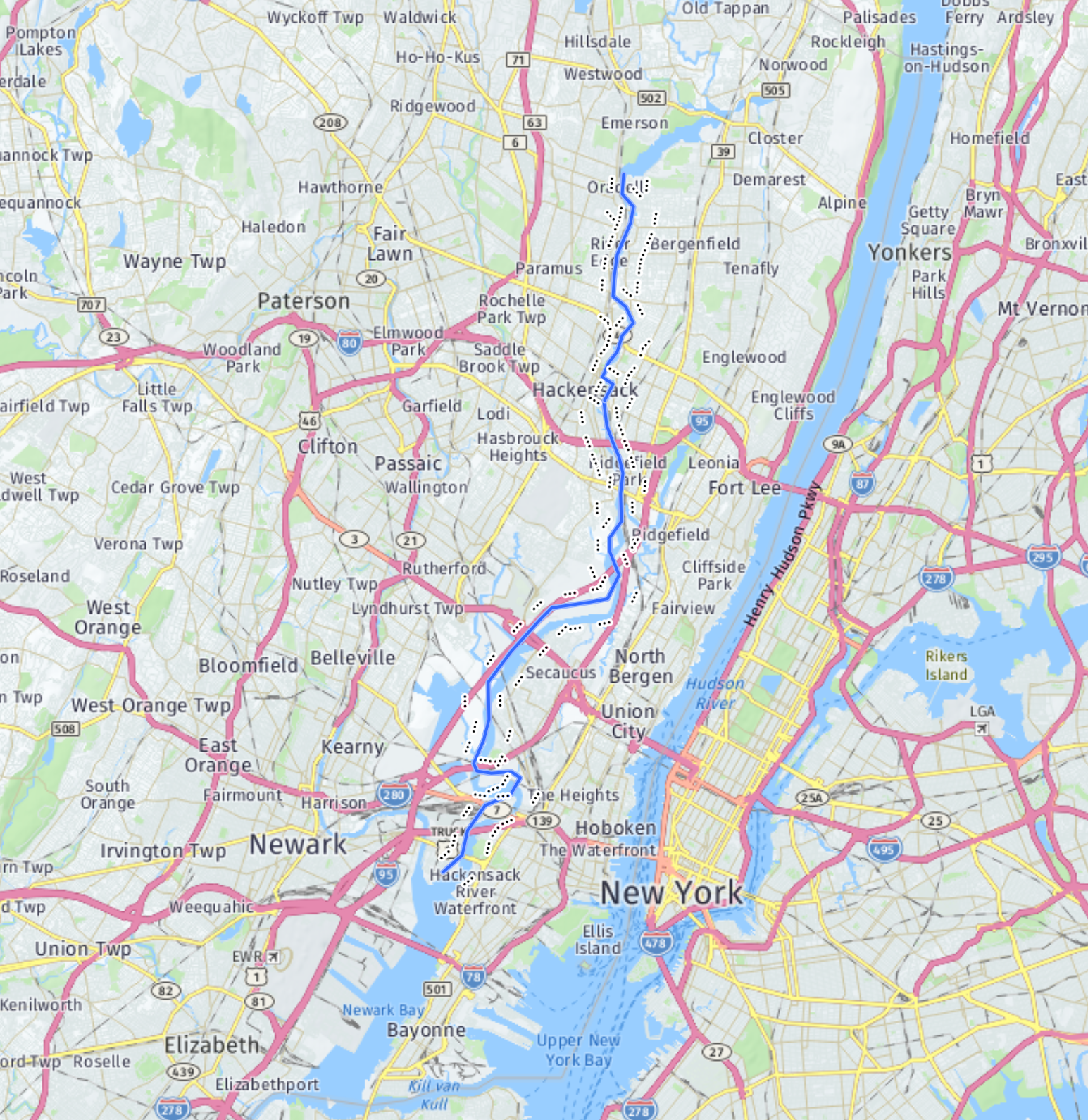Geography

The Hackensack River runs about 45 miles from New York State down to Newark Bay and New York Harbor. About halfway down, the river is fed by a number of streams and widens into a marshy area known as the Hackensack Meadowlands.
In Hudson County, the Meadowlands reach the border of Secaucus, where the Hackensack runs past Snake Hill– aka Laurel Hill Park– down to Jersey City and Bayonne. Skyway Park sits on a hill overlooking the Hackensack River on its eastern shore. At Kearny Point, the Hackensack merges with the Passaic River and continues south to Newark Bay.
The Hackensack River is tidal as far north as the town of Hackensack. The water is brackish and the marshes serve as an estuary, which creates a habitat for multiple species of plants and animals. To this day– especially since it has been (mostly) cleaned up– birds, fish and mammals are abundant in the meadowlands. The area was forested with Atlantic white cedar before the early Dutch settlers cleared the cedar forests and used dikes to drain the land. The Dutch farmers used the drained tidal lands to create “meadows” of salt hay.
Today 8,400 acres of wetlands remain in the Meadowlands. Because it can trap nutrients, the estuary provides vital nourishment for numerous species and serves as a primary nursery for ocean dwelling fish. It provides habitat for avian species and other wildlife, especially migratory birds, and it filters water as it moves into the Atlantic Ocean. For many years, the Hackensack River furnished both the Native Americans and the European settlers with abundant runs of herring, shad and striped bass as well as oysters, waterfowl and small mammals for food and furs. All this makes the estuary potentially one of the most ecologically valuable ecosystems in the world.
